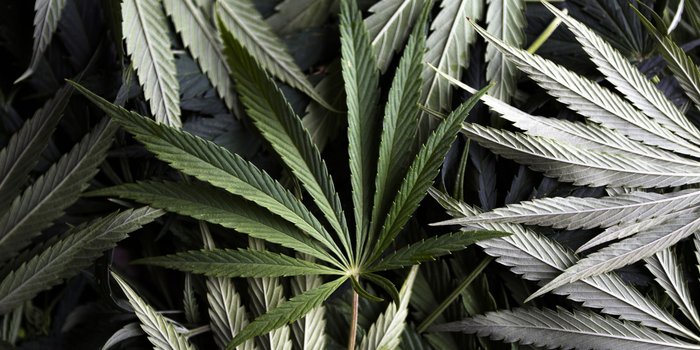Industrial hemp became a lawful agricultural commodity nationwide for the first time since 1937 when President Trump signed the 2018 Farm Bill on December 20th of last year. Farmers eager to capitalize on a promising cash crop, owners of hemp business and advocates passionate about the potential of this humble, versatile and hardy “weed” have spent the last couple weeks celebrating. Expectations are high for the legal cannabis industry, which could grow from $800 million in 2019 to $20 billion by 2022.
Industrial hemp is a non-psychoactive cultivar that looks the same as marijuana but contains less than 0.3 percent tetrahydrocannabinol or THC. Its uses range from foods and medicines to textiles, construction materials, biofuels and bioplastics. I called on some industry insiders to give me their hot takes on the challenges and opportunities inherent in industrial hemp legalization.
Samantha Walsh is a public affairs strategist and legislative policy expert whose clients include the Marijuana Policy Project, United Food and Commercial Workers Union and various hemp and marijuana clients ranging from edibles manufacturers, dispensaries and growers to cannabis education and advocacy groups. She breaks it down like this: “In the short term, the nutritional and cosmetic products will be the easiest ways to enter the market,” Walsh says. Aside from hemp seed, hemp seed oil, hemp milk and a host of other foods made from the plant’s seeds, cannabidiol or CBD oil, an extract of hemp flowers, has gained popularity as a remedy for anxiety, chronic pain and other ailments, as well as forming the basis for new epilepsy drugs. The extract was effectively removed from the Controlled Substances Act by passage of the 2018 Farm Bill.
Beyond that, Walsh says, “If anyone can advance processing and manufacturing, there will be business opportunities to fill gaps in the supply chain. A lot of the current processing and manufacturing technology is antiquated.”
Legalization will also open financial doors for hemp businesses, Walsh says, and the access to banking and investment capital will make a lot of that innovation possible. One opportunity for investors and entrepreneurs to come together will be The Hemp Biz Conference in May, where Walsh will be speaking.
She says that even for smaller transactions, hemp retailers’ ability to now accept debit and credit payments is “a complete game changer.” Consumers will have greater access to buy CBD and other hemp products online, and business revenues will reflect that. As financial options begin to open up, however, hemp businesses will have to adapt to a regulatory environment that has yet to take shape.
“The Department of Agriculture (USDA) will most likely develop hemp cultivation rules,” Walsh says, “but if they don’t, the states will have to submit their own programs, which the USDA will have to approve. Hemp businesses and farmers will have to learn about and operate within a structure that is not yet determined.”
The Food and Drug Administration (FDA) will play a role further down the supply chain. “The FDA may update regulations for processing and manufacturing hemp, but if they don’t, or until they do, businesses making and selling hemp products will operate under state parameters.” These regulatory changes will take place down the road, Walsh says. “For now, most people can continue as they are.”
Carl Lehrburger, founder of Colorado-based PureVision Technology, Inc., a company that has developed technology designed to separate and refine the raw materials in hemp stalks, echoed Walsh’s thoughts about financing and the need for processing innovation as a key challenge.
“Considering that most of the hemp plant is underutilized and wasted today in the U.S., there is a growing need for stalk processing capabilities,” Lehrburger said, referring to the fiber-rich stalks left over after hemp flowers are harvested for their CBD. “This push from growers will occur as value-added agriculture demands processing capabilities to offset the handling and disposal costs of stalks, and for obtaining secondary revenue.”
But, he said, “The single biggest challenge that will remain is identifying and securing investment capital to scale up processing innovations to keep pace with the supply chain and to build processing facilities beyond CBD extraction and CBD product manufacturing facilities.”
With legalization bringing that investment capital within reach of hemp businesses, Lehrburger sees his particular niche as ripe with potential. “There is a tremendous ‘pull through’ undway from product manufacturers who are increasingly demanding fiber for building products, woven goods and for making bio-plastics. We already know that consumers are demanding more hemp- and bio-based products,” he says, including hemp paper products ranging from packaging to toilet paper made with pulp that his company’s technology is designed to produce.
I see the demand, too, and the passion of advocates and innovators like Lehrburger to bring hemp into the 21st Century. But until now the major stumbling blocks have been legal and financial. But with industrial hemp legalized, I am extremely optimistic that investors, innovators and entrepreneurs eager to take advantage of these opportunities will find each other, and I’m committed to helping that happen.

